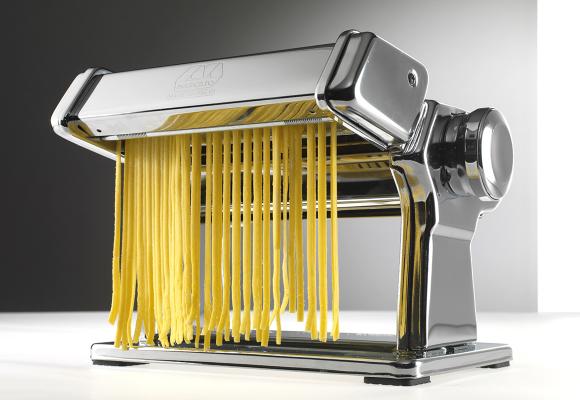I’m a fairly accomplished cook, been doing it for a long time and there aren’t too many styles of cuisines I haven’t tried making. (edit: this post got longer than I thought, so scroll down to last parapraph for tl;dr version).
But one thing I’ve meant to try and have not really gotten around to, is making my own fresh pasta from scratch. I guess I had always thought it seemed like an awful lot of work for what I figured would not really be all that much better than pasta from a box.
But my 16 year old has gotten interested in cooking lately. He’s been making his own pizza, dough and all, from scratch, and pretzels and bread. Most recently he started making his own pasta by rolling out the dough until it’s very thin and cutting it with a knife. He’s not really good at cutting even rows, so the resulting noodles are crazily varied in width. But the resulting pasta after a quick couple minute boil is amazingly good.
I do most of the daily cooking, and for weekday meals I often, maybe once a week, make a quick Bolognese-style sauce with ground beef, peppers, onion, garlic, crushed tomatores, etc. Boil up some box noodles and serve. Simple enough to prepare after I get done with work. Now my 16 year old, since he gets home from school much earlier than I get done with work, has volunteered to make fresh pasta a couple times, and it transforms an ordinary weekday meal into something really special.
Yesterday I made Chicken Fra Diavolo sauce (a spicy tomato-based sauce with diced chicken) and solost-jr volunteered to make pasta. I said, I think we have a pasta maker way in the back of the pantry cupboard somewhere, and he was eager to try it out. Mrs. solost bought it probably before solost-jr was born, we used it once and forgot about it, since it’s a nightmare to clean.
We got the pasta maker set up, and he worked on making extra-thick spaghetti-style noodles. Just making the pasta is a lot of work-- he was getting tired turning the handle, so we took turns for awhile. And I was helping him by cutting the noodles when they got long enough, then carefully folding them and putting them aside. Then it turned out the noodles stuck together so badly we had to re-run them though the pasta maker after all that work, and lay out each noodle separately on a bunch of cutting boards and other flat surfaces. It was fairly comical and a ton of work, but it ultimately resulted in another batch of amazing pasta and a fantastic meal.
So, this leads to fresh pasta-making questions. For those of you who make your own pasta, what are your tips and techniques? How do you keep just-made raw pasta noodles from sticking together-- dust with a little flour? Is a pasta maker more trouble than it’s worth? I looked up a pasta cutter online-- it looks like a pizza cutter with 6 or 8 cutting wheels, so you would roll out the dough thin and cut several linguini-size strips at once. That looks like it might be far easier than a pasta maker.
:max_bytes(150000):strip_icc()/CambomCollapsiblePastaDryingRack-221be6df51524cc0881550170d36d0ef.jpg)
